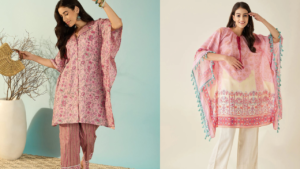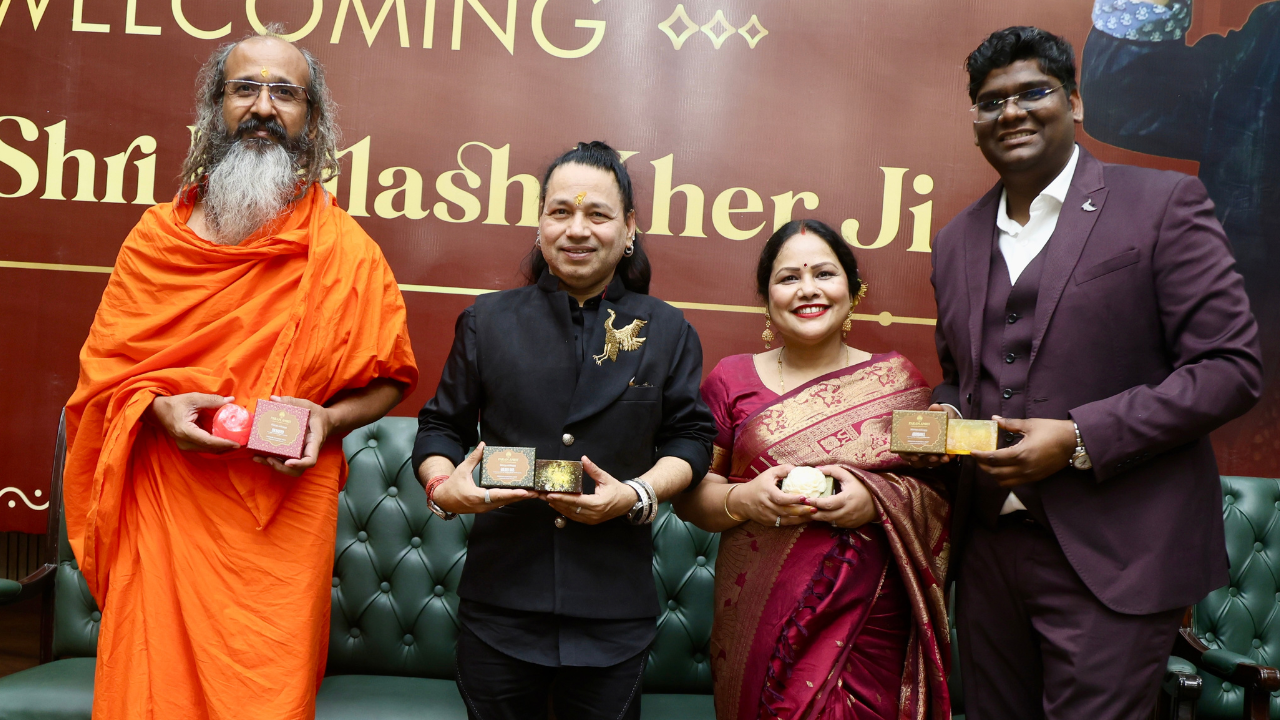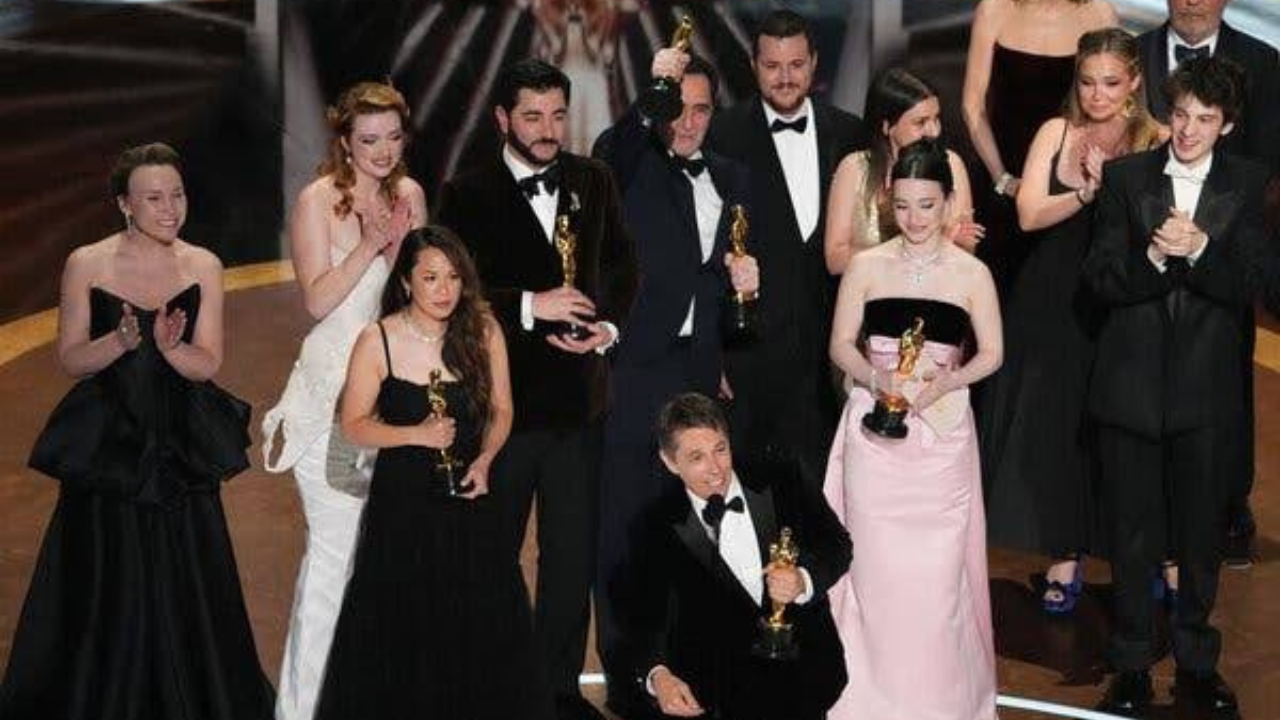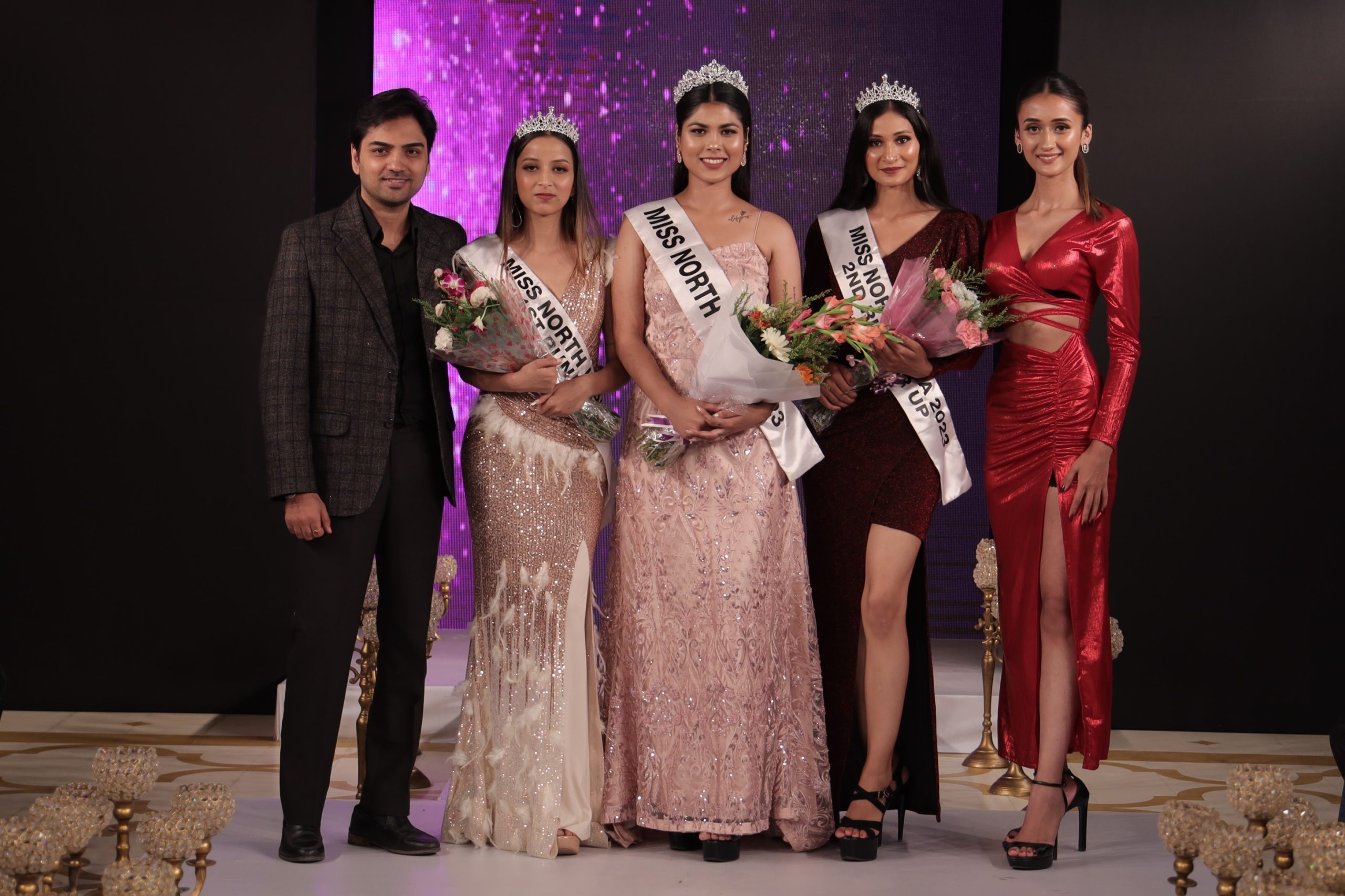Beauty
Kaftans: The New Festive Staple Taking Over Indian Wardrobes

Wondering why kaftans are becoming the festive go-to for so many? We chat with Navin Rao, co-founder of The Kaftan Company, about their rich history, global influences, and what makes them a perfect pick for grand Indian celebrations.
Across India, a new wardrobe essential is winning hearts and taking its place in closets everywhere: the kaftan. Once seen as beachwear or casual loungewear, kaftans have become a favorite choice for festive celebrations, weddings, and even formal gatherings. Flowing, elegant, and versatile, they’ve become the answer for those seeking both style and comfort.
As Navin Rao, co-founder of The Kaftan Company, shares in a chat with us, “People are loving kaftans in their wardrobes these days, especially because they bring together luxury and ease in a way that no other garment really does. They’ve gone from being relaxed loungewear to becoming a true festive staple.” With their loose silhouettes, vibrant prints, and airy fabrics, kaftans effortlessly strike the balance between beauty and practicality, making them ideal for celebrations like Diwali and beyond.
What makes kaftans so appealing today is that they’re a canvas for creativity. From shorter tunic styles to floor-length versions adorned with embroidery and beadwork, designers are constantly reinventing the kaftan to cater to modern tastes. Whether worn with chunky jewelry for a statement look or paired with heels for an evening affair, kaftans have become a go-to outfit that adapts to any occasion.

When we think of kaftans, our minds wander to flowy fabrics, prints, and comfort but Navin brings up,, “Kaftans are much more than a modern fashion trend. They’re rooted in rich cultural and historical significance and have come a long way, making a full-circle comeback in Indian festive wear, especially during celebrations like Diwali.”
So, how did kaftans journey from royal courts to the wardrobes of style-forward Indians? And why have they become a festive staple today?
The kaftan’s story traces back centuries, to ancient Persia and Ottoman Turkey, where it symbolized royalty and status. “Kaftans were once a sign of power, worn by sultans, emperors, and nobility,” Navin explains. “When these garments traveled to India through trade routes, they found a new life, adapting to local aesthetics and merging with Indian culture.” In regions touched by Persian and Mughal influences, kaftans were tailored with Indian touches—fine silks, brocades, and rich embroideries.“The Mughal era embraced kaftans as part of the regal wardrobe,” Navin adds. “The loose fit was ideal for the hot Indian climate, and the intricate detailing made them perfect for special occasions.” What began as royal robes soon blended into Indian culture, and over time, kaftans gained a place in festive celebrations, offering a fusion of history and luxury.
The Influence of Global Trends on Kaftans in India
Kaftans’ resurgence in India is partly due to the influence of global trends. “Effortless luxury has become a buzzword in Western fashion, and it’s something that resonates in India as well,” Navin points out. “As Indian designers began infusing traditional garments with global styles, kaftans found their way onto international runways and, ultimately, into Indian wardrobes.”
Another factor is the growing focus on sustainable fashion. “Kaftans lend themselves well to eco-friendly production due to their simple patterns and fabric-efficient cuts,” Navin explains. “Many designers now offer sustainable kaftans made from organic or recycled materials, making them a choice for those who want to celebrate with style while being mindful of the environment.”
Celebrity endorsements have also helped push kaftans into the spotlight. “Seeing Bollywood stars and global influencers embracing kaftans has made them more than just a casual option—they’re now seen as high-fashion and festival-appropriate,” Navin says.
A Modern Festive Staple
In recent years, kaftans have shed their label as simple loungewear. “Today’s kaftans come in different styles, lengths, and fabrics, designed to suit both traditional and Western tastes,” Navin says. “We’re seeing asymmetrical cuts, fusion embroidery, and modern drapes that can go from a Diwali dinner to a beach vacation seamlessly.”
Why Kaftans are Perfect for Grand Indian Celebrations

A big part of kaftans’ charm lies in their adaptability. No longer just a long, robe-like garment, kaftans are now available in shorter lengths, tunic styles, and even statement pieces paired with leggings or pants. “This versatility has allowed kaftans to move beyond beachwear, becoming a go-to choice for the festive season,” Navin notes. One of the main reasons kaftans have become a festive favorite is their undeniable comfort. “Unlike heavily embellished lehengas or structured sarees, kaftans offer a breathable and fluid alternative,” Navin says. “Whether you’re attending a puja, hosting a Diwali dinner, or dancing with friends, kaftans allow you to look effortlessly chic without the weight or tightness of more traditional garments.”
The choice of fabrics also plays a role. Kaftans come in everything from rich silks and velvets to lightweight cottons and chiffons. “This variety allows women to tailor their look to the occasion,” Navin explains. “A cotton kaftan with delicate embroidery is perfect for casual gatherings, while a silk or velvet kaftan with gold accents brings a sense of festive glam to grand celebrations.” And with the right accessories, kaftans can take on any level of formality. “Pairing a kaftan with traditional jewelry—like statement earrings or chunky bracelets—creates a stunning fusion look that feels just right for Indian festivals.”
With their unique charm and adaptability, kaftans are here to stay—bringing a fresh twist to festive wear that feels as contemporary as it does timeless.
Ready to make kaftans your go-to festive outfit this season?
Follow us for more @Discultured
Beauty
The Questionable Use of the Idea of Feminism as a Marketing Ploy Across History

Blue Origin’s all-female spaceflight was hailed as a feminist milestone but many saw it as a luxury spectacle masked as empowerment. It highlights how, numerous times in history, feminism has been co-opted to sell privilege rather than drive structural progress.
On April 14, 2025, Blue Origin’s New Shepard rocket launched its NS-31 mission, carrying an all-female crew into suborbital space for an 11-minute flight. Marketed as a historic milestone for gender representation as the first all-woman space crew since Valentina Tereshkova’s 1963 solo flight, the mission was celebrated by its organizers and crew as a feminist triumph. However, the mission’s commercial nature, high cost, and celebrity-heavy roster have ignited a firestorm of criticism, exposing how the word “feminist” has been used in a misleading way to cloak privilege and spectacle in the guise of progress. The crew was a high-profile mix: Media personality Lauren Sánchez,, led the charge, joined by pop star Katy Perry, CBS Mornings host Gayle King, former NASA scientist Aisha Bowe, civil rights activist Amanda Nguyen, and film producer Kerianne Flynn. The automated flight, which crossed the Kármán line at 62 miles above Earth, offered a few minutes of weightlessness and stunning views before safely landing in West Texas. Blue Origin touted the mission as a step toward inclusivity in space exploration, with crew members like Sánchez and Bowe emphasizing its potential to inspire women and minorities in STEM fields.

A Feminist Milestone or a Misstep?
At first glance, an all-female space crew seems like a clear win for feminism—a field historically dominated by men. Yet, the mission’s execution and framing have led many to question whether it really advanced the cause of women or simply co-opted the feminist label for publicity. The word “feminist” has been used in a misleading way here, slapped onto a venture that critics argue prioritized elite access over systemic change.
The mission’s high cost which reportedly requiring a $150,000 deposit per person reflects its exclusivity. Only those with significant wealth or connections could afford such an experience. This sparked accusations of elitism, with figures like Emily Ratajkowski, Olivia Wilde, and Amy Schumer slamming the flight as a tone-deaf display of privilege amid global crises like poverty and climate change. Ratajkowski called it “beyond parody,” arguing it failed to represent meaningful progress for women. NS-31’s crew, while diverse in some respects, leaned heavily on high-profile figures whose participation felt more performative than transformative. Tagging this as a feminist victory risks diluting the term, equating a brief, costly joyride with the hard-fought battles for gender equity in education, workplaces, or even NASA’s astronaut corps.
Blue Origin and the crew emphasized the mission’s scientific contributions, particularly Amanda Nguyen’s experiments testing NASA spacesuit fabric and an electric chip for breast cancer detection. These efforts, while commendable, were overshadowed by the flight’s broader framing as a celebrity spectacle. The inclusion of figures like Katy Perry, whose mid-flight performance of “What a Wonderful World” was widely mocked, further undermined the mission’s credibility.
The mission’s environmental impact drew significant scrutiny. Private spaceflight, including Blue Origin’s New Shepard, contributes to carbon emissions and resource use at a time when climate change is a pressing global issue. Ethically, the mission raised questions about the commercialization of space and the “astronaut” title. By branding wealthy passengers as trailblazers, Blue Origin risks trivializing the rigorous training and contributions of professional astronauts who undertake months-long missions with tangible scientific goals. The NS-31 crew’s brief flight, by contrast, felt like a luxury experience, not a feminist or scientific breakthrough.
Historical and Analogous Instances Where “Feminist” Was Used to Market Questionable Agendas
The misuse of feminist ideals to market products or agendas that don’t genuinely advance gender equity is not a new phenomenon. Historically, corporations and campaigns have co-opted the language of women’s liberation to sell products or ideas that, in hindsight, were harmful or exploitative.
Tobacco Industry’s “Torches of Freedom” Campaign
In the 1920s, cigarette companies like Lucky Strike and Philip Morris sought to expand their market by targeting women, who faced social taboos against smoking. The American Tobacco Company, under the guidance of public relations pioneer Edward Bernays, launched a campaign that framed cigarette smoking as a feminist act of rebellion against patriarchal norms. In 1929, Bernays orchestrated the infamous “Torches of Freedom” stunt during New York City’s Easter Sunday Parade. He hired debutantes to march as suffragists, publicly lighting cigarettes as symbols of liberation, with the press primed to cover the event as a bold feminist statement.
The campaign was a masterclass in manipulation. The feminist label was exploited to equate smoking with women’s suffrage and autonomy, despite the known health risks of tobacco, which were already suspected by medical professionals at the time. By the 1930s, smoking rates among women soared particularly as tobacco companies continued targeting them with “slimmer” cigarette brands like Virginia Slims in the 1960s.

This campaign’s legacy is a reminder of how feminist ideals can be hijacked for profit. It didn’t advance women’s rights but instead addicted generations to a deadly product, all under the guise of empowerment. The “Torches of Freedom” remains a textbook case of feminism being co-opted to sell harm.
Household Appliances as “Liberation” Tools
Post-World War II, the rise of consumer culture saw appliance manufacturers like General Electric and Westinghouse market household goods—washing machines, vacuum cleaners, electric stoves—as feminist breakthroughs. Advertisements proclaimed these products would “free” women from the drudgery of housework, granting them time for personal fulfillment. In reality, these campaigns reinforced traditional gender roles. The “liberation” promised by appliances often trapped women in the domestic sphere, as societal expectations shifted to demand even higher standards of cleanliness and homemaking. Many argue that these technologies increased women’s workloads by raising expectations for perfect households, while men were rarely encouraged to share domestic labor. Moreover, the high cost of appliances meant only middle- and upper-class women could afford them, excluding working-class and minority women from this so-called feminist progress.

Labeling these products as feminist tools was a marketing ploy to boost sales, not a genuine effort to challenge systemic inequalities like unequal division of labor or women’s exclusion from the workforce.
Marketing of Beauty Products in the mid-20th century
In the mid-20th century, cosmetics and beauty industries, led by brands like Revlon, Avon, and Clairol, capitalized on feminist rhetoric to sell products that promised to empower women through appearance. Advertisements framed makeup, hair dye, and skincare as tools for self-expression and confidence, aligning with the era’s emerging discussions of women’s agency. Clairol’s 1957 campaign for its “Does she… or doesn’t she?” hair dye, for example, suggested that coloring one’s hair was a bold, feminist choice to defy aging and societal judgment, with the tagline implying secrecy and personal power. However, these campaigns often reinforced restrictive beauty standards that pressured women to conform to idealized notions of femininity.

The “feminist” framing ignored how these products were sold as necessities to “fix” perceived flaws, adding to insecurity rather than empowerment. By branding beauty products as feminist, these companies profited from women’s insecurities while sidestepping the structural barriers—like workplace discrimination or lack of political representation—that true feminism sought to address.
Alcohol Marketing as Women’s “Freedom”
In the wake of second-wave feminism, alcohol companies began targeting women with campaigns that framed drinking as a feminist act of equality. Brands launched ads in the 1970s and 1980s showing women in professional settings—sipping cocktails at bars or hosting parties—suggesting that drinking was a way to claim the social freedoms traditionally reserved for men.

These campaigns co-opted feminist language to normalize alcohol consumption among women, ignoring the health risks of increased drinking, including liver disease and addiction, which rose among women during this period. The “feminist” framing also glossed over how these ads often sexualized women, portraying them as liberated only when appealing to male gazes. Like the cigarette campaigns decades earlier, this misuse of feminism prioritized corporate profits over women’s well-being, using empowerment as a veneer for exploitation.
The Blue Origin NS-31 mission, with its “feminist” branding of an exclusive spaceflight, echoes a long history of exploiting feminist ideals for questionable ends. Feminism is often used as a shiny label to sell things that don’t really help women. Time and again, the idea of “empowerment” gets twisted to push products or experiences that only benefit a few, usually the wealthy. These moves look like progress but often just keep old problems in place. These historical missteps tell us about the need to scrutinize modern claims of feminism, ensuring the term isn’t reduced to a marketing ploy but remains a call for systemic change that uplifts all, not just those who can afford the spotlight.
Beauty
Weekly Pop Culture Recap: Oscar Nominations Break Records, Sabyasachi Celebrates 25 Years in Fashion and more.

Catch up on the must-know moments from this week in pop culture. Scroll down to see all the major highlights.
This week in pop culture has been packed with exciting updates that have captured global attention. From history-making Oscar nominations to major milestones in the fashion industry, the spotlight has been on some truly groundbreaking moments. Whether you’re a fan of cinema, fashion, or both, there’s plenty to keep you buzzing. Catch up on the biggest highlights you don’t want to miss!
2025 Oscar Nominations Announced
The 97th Academy Awards nominations were announced on January 23, 2025, showcasing a diverse lineup of films and performances. The ceremony will take place on March 2, 2025. Leading the nominations is the Spanish-language film Emilia Pérez with 13 nods, marking a historic moment as it becomes the most-nominated non-English-language film. Among the nominations, Karla Sofía Gascón has made history as the first openly transgender performer to be nominated in an acting category.
Other notable films include The Brutalist and Wicked, each receiving 10 nominations, including Best Picture. The Substance, directed by Coralie Fargeat, has also garnered attention, with Fargeat being recognized in the Best Director category. Fernanda Torres, nominated for I’m Still Here, becomes the second Brazilian actress to receive a nomination in this category, following her mother, Fernanda Montenegro, in 1999.
International cinema has a strong presence this year, with Latvia’s Flow earning nominations for both Best Animated Feature and Best International Feature Film, a rare accomplishment. The nominations reflect a growing emphasis on global cinema and inclusivity in the awards.
Sabyasachi Mukherjee Celebrates 25 Years in Fashion
Renowned Indian designer Sabyasachi Mukherjee marked the 25th anniversary of his brand with a star-studded fashion show in Mumbai. Bollywood actress Deepika Padukone opened the event, donning a monochromatic white ensemble that garnered significant attention. The celebration was attended by numerous celebrities, including Alia Bhatt, Sonam Kapoor, and Ananya Panday, highlighting Sabyasachi’s influential presence in the fashion industry.
Louvre to Host Louvre Couture
The Louvre Museum in Paris is set to host an extraordinary exhibition, Louvre Couture, bringing together the worlds of high fashion and fine art. This exhibit, slated to open later this year, will showcase iconic fashion pieces inspired by or directly influenced by the museum’s rich art collection. Accompanying the exhibition is Le Grand Dîner, a high-profile gala that will blend the glamour of the fashion world with the cultural gravitas of the Louvre.
This event underscores a growing trend where fashion exhibitions have become a major draw for museums worldwide. Historically, institutions like New York’s Metropolitan Museum of Art, spearheaded by figures such as Vogue’s Diana Vreeland, pioneered the concept of fashion as a legitimate form of art to be displayed in museums. These exhibitions, including the Met Gala’s annual themed displays, have demonstrated how the synergy between art and fashion can captivate diverse audiences while being highly profitable.
Fashion exhibitions today are not only cultural phenomena but also lucrative ventures. Museums have increasingly embraced these showcases to attract younger, fashion-forward audiences and secure significant sponsorships from luxury brands. In turn, these brands gain prestige and visibility, aligning themselves with the cultural cachet of historic institutions. Events like Louvre Couture and the annual Met Gala prove that the intersection of fashion and art is a win-win for cultural enrichment and commercial success.
Coldplay’s Historic Return to India
Coldplay’s “Music of the Spheres” World Tour marked a triumphant return to India in January 2025, with the British rock band performing three sold-out concerts at Mumbai’s DY Patil Stadium on January 18, 19, and 21.
The concerts featured a mix of Coldplay’s classic hits and newer tracks, accompanied by impressive light displays and interactive elements that enhanced the audience experience. The band’s commitment to sustainability was evident, as they continued their efforts to reduce the environmental impact of their performances. These concerts were part of Coldplay’s ongoing “Music of the Spheres” World Tour, which has been recognized as one of the most successful tours by a group. The success of Coldplay’s concerts in India underscores the growing enthusiasm for live music among young, affluent Indians, contributing significantly to the country’s live entertainment market.
Also Read: Meta Phases Out Fact-Checking and Adopts a Community-Driven Approach similar to X
Follow us for more @Discultured
Beauty
Param Amrit: Rediscovering Skincare through Ancient Ayurvedic Wisdom

On 11th November, Dr. Nutan Kher’s luxury Ayurvedic skincare brand, Param Amrit, launched, introducing a skincare line deeply rooted in Ayurvedic tradition. Here’s what sets this brand apart!
Who wouldn’t like a skin care.product that goes deeper than the skin with bringing balance, harmony, and a sense of connection to nature. Param Amrit, founded by Dr. Nutan Kher, brings this vision to life by combining modern skincare with the ancient Ayurvedic practice of Mantra Aushadhi. This lesser-known tradition, recorded in Ayurveda’s foundational texts, involves chanting powerful mantras over herbs to infuse them with spiritual energy, creating products that nourish not just the skin but also the mind and soul.
According to Dr. Kher, “Param Amrit is about embracing the deeper power of nature’s elements.” Her approach means that every product aligns with the natural world’s energy, aiming to give you inner peace and well-being alongside skincare.
Also Read: Kaftans: The New Festive Staple Taking Over Indian Wardrobes
Ancient Techniques, Modern Benefits
Param Amrit’s range of products combines age-old processes with a spiritual touch. The line includes the signature Shatdhaut Ghritamrit face cream, Kumkumadi Face Serum, nourishing lip balms, and Ayurvedic soaps, all crafted using Vedic methods. For example, the face cream involves a meticulous process where ghee is washed 10,000 times in Ganga water under the full moon, with mantras chanted continuously to enhance the product’s potency.
As Chief Marketing Officer Yogesh Thakur explains, Param Amrit’s vision goes beyond skincare. “Our goal is to deliver not just physical beauty but spiritual wellness,” he says. It’s an approach that seeks to combine Ayurvedic authenticity with the transformative energy of mantras. Param Amrit offers a refreshing alternative to conventional beauty routines by weaving spirituality into skincare. Instead of focusing only on external beauty, the brand’s products are made to create a deeper connection to nature and oneself.
For those seeking something beyond surface-level skincare, Param Amrit’s unique blend of ancient wisdom and modern wellness may be exactly what you need—skincare that nourishes not only the skin but the spirit as well.
About the Launch:
On 11th November, Param Amrit launched in style at the Constitution Club of India, introducing their concept of luxury skincare with ancient Ayurvedic wisdom to everyone. The event was a special moment for the founder, Dr. Nutan Kher, who was joined by her brother, renowned singer and Padma Shri awardee Kailash Kher, as well as spiritual leader Shri Baba Swami Amritanand Ji. Guests present at the event had the chance to hear about Param Amrit’s philosophy, explore the mantra-infused products firsthand, and experience the deeper purpose behind this new approach to skincare.
Follow us for more @Discultured
-

 Events10 months ago
Events10 months agoThe Most Memorable Highlights from the 2025 Academy Awards
-

 Events12 months ago
Events12 months agoWeekly Pop Culture Recap: Talkworthy Highlights from the 82nd Golden Globes Awards, Disney’s Merger with FuboTV and Much More
-

 Fashion8 months ago
Fashion8 months agoYour Wardrobe Might Be Reflecting a Recession
-

 Social12 months ago
Social12 months agoMeta Phases Out Fact-Checking and Adopts a Community-Driven Approach similar to X
-

 Events8 months ago
Events8 months agoWhat Indian Celebrities Wore to the Met Gala 2025
-

 Fashion10 months ago
Fashion10 months agoWeekly Pop Culture Recap: Donatella Versace has resigned as Versace’s Chief Creative Officer, BLACKPINK’s Lisa is branching out with her graphic novel, ALTER-EGO.
-

 Events8 months ago
Events8 months agoThe Biggest Moments for Indian Cinema at Cannes 2025 That Had Everyone Talking
-

 Fashion8 months ago
Fashion8 months agoDupatta Labeled as European Aesthetic is a Case of Cultural Erasure









Pingback: The NOU Walk Of Life : New Talk of Town in Luxury Footwear - Discultured
Pingback: Param Amrit: Rediscovering Skincare through Ancient Ayurvedic Wisdom - Discultured